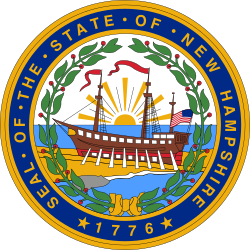| |||||||||||||||||
| |||||||||||||||||
| |||||||||||||||||
| Elections in New Hampshire |
|---|
 |
The 1788 New Hampshire gubernatorial election was held on March 11, 1788, in order to elect the President of New Hampshire. (The office would be renamed to Governor in 1792.) Incumbent Federalist President John Sullivan was defeated in his re-election bid by Anti-Federalist candidate and former President John Langdon, who had initially finished first in the popular vote during the previous President election. [1]

